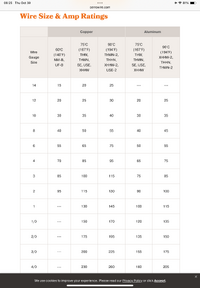Lots and lots of threads on here about sound systems and battery capacity, some specific to your model of boat.
Number one piece of advice do this project correctly as the main driver and cost of the project as secondary. If you follow that simple guideline you’ll have a battery system that you’ll never have to think twice about.
1. Get a Victron smart shunt, they’re about $100 bucks and communicate with your smart device via Bluetooth. Then you will know; how much energy you are drawing, how much energy you have drawn out of your battery and the state of charge of your battery, anything else is just a guess, and if you’re guessing you cannot make educated economical decisions. You cannot use voltage on any lead acid battery to determine state of charge unless the battery sits isolated for 24 hours.
2. You need to set up a two battery system with a DVSR / ACR with an emergency paralleling switch so that your group 24 start battery is isolated from house loads such as your sound system. The BEP marine two battery switch with integrated DVSR that comes standard on the twin engine Yamaha boats is a great device, compact and fully automatic and the DVSR is configurable for automatic which is how it comes from the factory, storage mode or run hot mode, the run hot mode will be used with a LiFePO4 or LFP battery if you choose to go that route because you cannot leave a LFP battery tied to a lead acid battery or it will discharge into the lead acid battery due to its higher resting voltage. A lot of people set up the BEP marine battery switch to storage mode so that when the battery switches are off so is the DVSR and allows independent charging of the house and start battery.
LFP batteries are awesome in their capacity to store energy, more than two times that of a given size lead acid battery, half the weight. One of the main cost saving attributes of LFP batteries is their long life, 10,000-15,000 cycles if only discharged 50%, 5000-10,000 cycles if discharged to 80% and roughly 3000 cycles if discharged above 95%, the typical lead acid battery is good for roughly 500 cycles.
But the system LFP batteries are used in needs to be set up properly, also if you’re going to go the LFP battery route do not buy a cheap one, nothing good is cheap and nothing cheap is good. If you’re not willing to pay the price of a good LFP battery then stick with flooded lead acid FLA batteries and charge them properly.
3. Stick with a lead acid battery for your start battery, whether AGM or FLA.
4. If you do not have an on board charger, get one, a good one, I suggest at least 10A of charging power per battery, FLA batteries require 10-13% of Ah rating as the charge amperage, and all LFP batteries I’ve seen require a minimum of 10A of charging power per battery. Your boats charging system is limited to roughly 13A above 3500 rpm and roughly half of that at idle and are not capable of fully charging a FLA / AGM battery as those batteries require a very lengthy amount of time in the absorption phase of charging, up to 8 hours. The charging systems on our boats are well suited for LFP batteries. LFP batteries charge five times as fast as a FLA / AGM battery, and at a much higher rate so if you’re going to go the LFP route you might consider an onboard charger for the LFP battery that has a 25A charge rate. NOCO makes a good charger and you can get an AC charge port which makes plugging in the charger very simple. From my experience I have ended up with the Victron IP 67 battery chargers, Bluetooth enabled and fully configurable for any battery chemistry, and come with two charge rates in each model, mine are 25A or 10A and there are lower amperage versions each with two charge rates. When I started on this battery journey it would take 12-14 hours to recharge my FLA batteries with a 10A charger, now with LFP batteries and the 25A Victron it takes 3.5 hours. Again, if quality LFP batteries are not in the budget then just get FLA batteries, charge and care for them properly, keep them clean, check the electrolyte level, check the specific gravity and perform regular equalizing charges and you’ll get the best performance possible and the longest life. I prefer FLA over AGM as you can perform equalizing charges on FLA batteries and you cannot on AGM batteries, and FLA batteries typically have more Ah and cold cranking amps than AGM. The big advantage of AGM batteries is they are no maintenance other than charging, I have an interstate group 24 AGM dual purpose for my start battery and it has been working great for three years.
5. Use appropriate size conductors, using greatly oversized conductors for the application only increases cost and does nothing for performance.
6. Get a jump pack and leave it on your boat.
I spent quite a bit of time researching about LFP batteries before installing them in my boat and learned a lot along the way with my own efforts as well as input from others on this site. I started out replacing my trolling motor batteries with battle born LFP batteries then replaced my house battery with another battle born battery. Huge improvement in the trolling motor performance in so far as run time, same with the house battery..you can read about it here;
Conversion to LiFePo batteries

